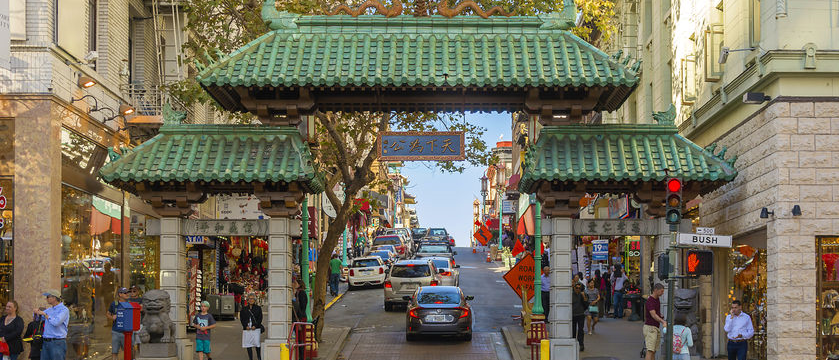
As the oldest Chinatown outside of Asia, San Francisco’s Chinatown spans an impressive 24 blocks and remains one of the city’s most popular attractions. It’s so popular that it receives more visits each year than the Golden Gate Bridge. Residents and tourists alike flock to Chinatown for its authenticity and it doesn’t disappoint. Below are five sites worth investigating.
Start with the Chinatown Gate
The Dragon Gate that marks the official entrance to Chinatown in San Francisco sits at the intersection of Grant Avenue and Bush Street. Two lions stand to either side of the gate while koi fish and dragons adorn the gate itself. Taiwan presented the gate as a gift to the city in 1969. It also comes inscribed with a quote that states “All under heaven for the good of the people” when translated to English.
Sing Chong Building Museum
After a devastating earthquake destroyed much of Chinatown in San Francisco and some of the surrounding areas in 1906, architects erected this building before any others. Many feel that alone is a reason to stop for a visit. It’s also the reason that people photograph the Sing Chong Building Museum more than any other building in San Francisco, including those outside of Chinatown. Although some criticize the builders for not remaining true to genuine Chinese architectural styles, one of the reasons so many people come to the building is to decide this question for themselves.
The Chinese Herbal Shops
Residents, as well as many visitors to Chinatown, enjoy preparing their food with a wide variety of Chinese herbs. That makes the herbal shops in San Francisco’s Chinatown ideal for their cooking needs. Visitors can also find Chinese doctors in this area to recommend specific remedies to them as well as diagnose minor health issues. The Great China Herb Shop, located at 857 Washington, is the oldest in the area with a history that dates to 1857. Customers of the shop appreciate it for the original cubby holes and wooden counters.
Bank of Canton
This building formerly held the Chinese Telephone Exchange and has the distinction of having the first switchboard and public telephone pay station. After the 1906 earthquake destroyed the building, Chinese residents rebuilt and it remained the Chinese Telephone Exchange until 1949 when rotary dial telephone became the norm. The building has housed the Bank of Canton for the past 70 years.
Z & Y Bistro Wine Bar
Unfortunately, many eating establishments in Chinatown have a “hole in the wall” reputation, meaning they can lack cleanliness and modern decoration. The new Z & Y Bistro and wine bar is different in that it’s very contemporary and extremely clean. It’s also a rare wine bar in Chinatown. As a spin-off of Z & Y Restaurant, also located in Chinatown, the wine bar offers local and international white and red wines that offer the perfect complement to authentic Chinese food.
Whether a person decides to shop, eat, sightsee, or a combination of all three, San Francisco’s Chinatown certainly has no shortage of options.
